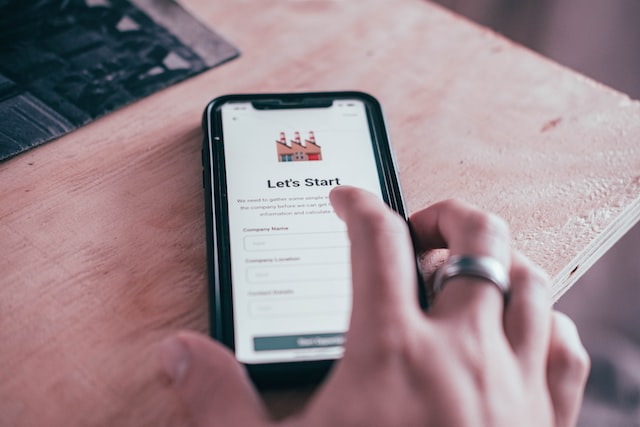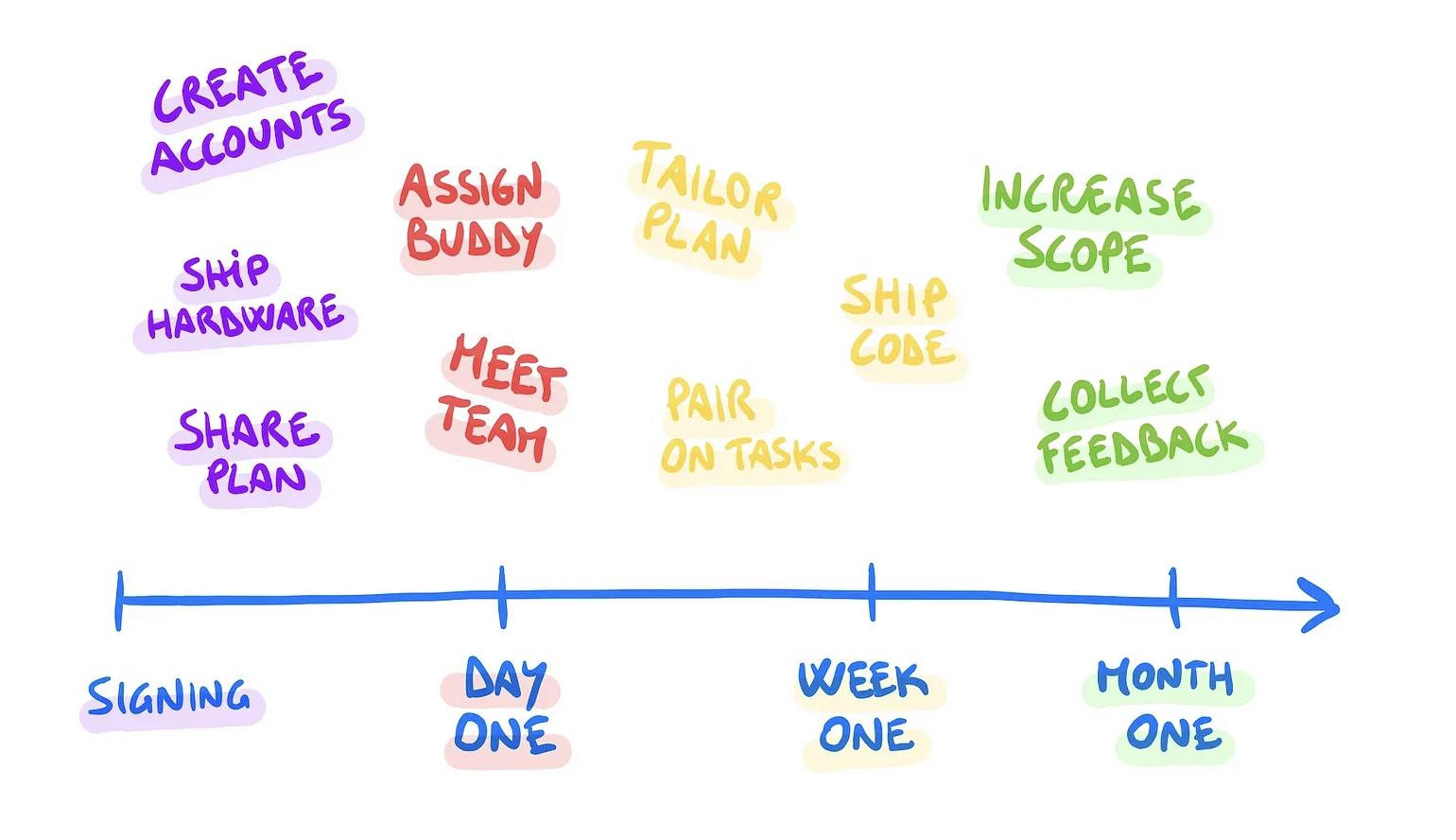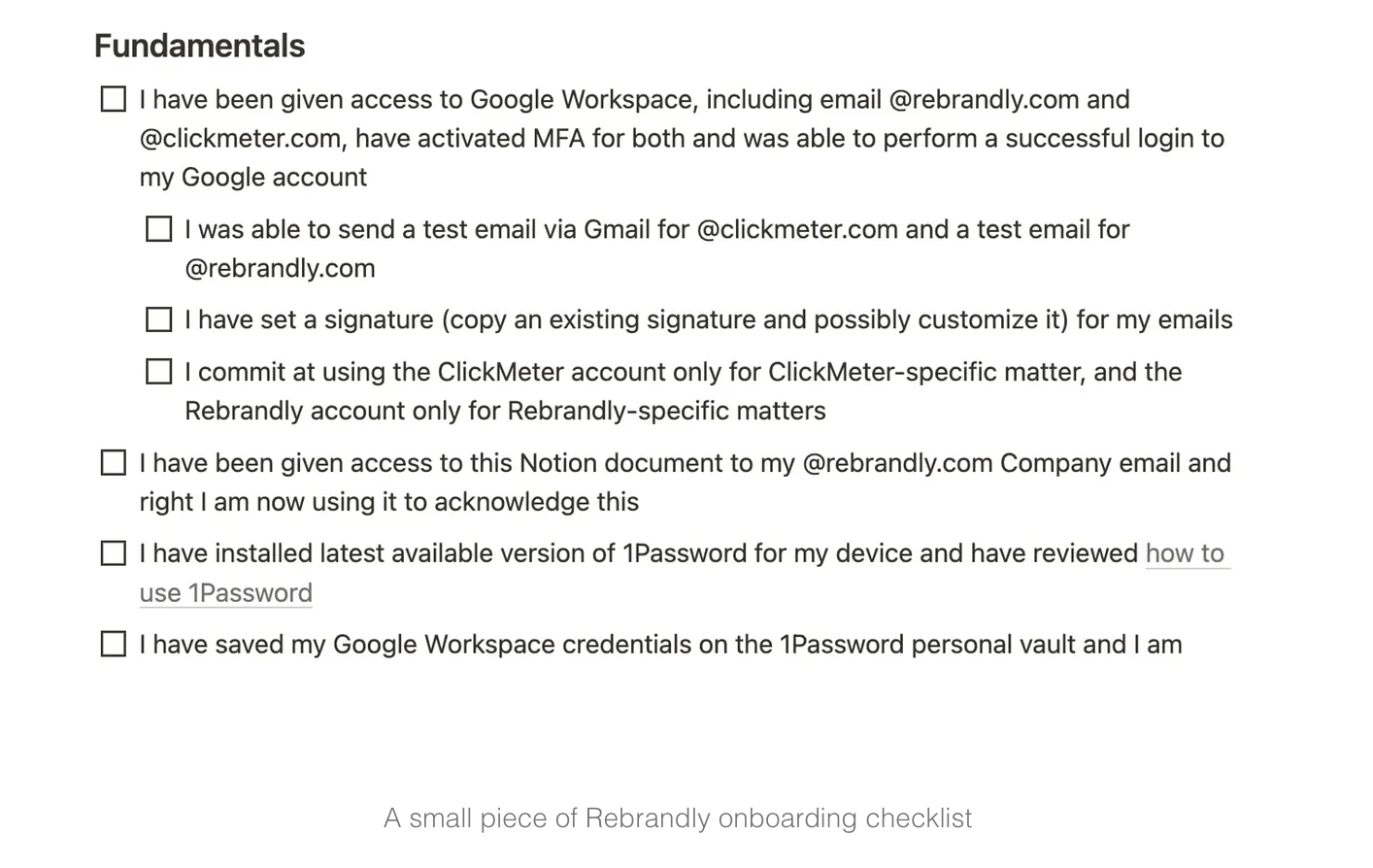- Resource Center
- Professional Development
- Articles & Videos
- How to Onboard Engineers
10 October 2022
How to Onboard Engineers

Sign up for our newsletter on globalization and localization matters.
When it comes to hiring and retaining talent, software startups have it the hardest of any industry.
The average tenure of a startup engineer is less than 2 years, and shrinking. Out of these, on average six to seven months are spent to bring the new engineer up to speed in the company.
An outstanding onboarding process is one of the most effective ways to make this better, because it brings two benefits:
-
Faster integration — top quartile companies make engineers ship production code in less than one week, and fully onboard them in three months.
-
Reduced turnover — engineers who experience good onboarding have a significantly longer tenure.
When you combine the faster integration with the reduced turnover, investing in your onboarding process becomes a no-brainer that has easily the highest ROI of all of your hiring initiatives.
In the past few weeks I have talked with the best managers I know and researched onboarding case studies from successful companies. I matched all of this with my own experience and tried to condense everything in 2000 words!
So here is my guide on how to onboard engineers. It collects the best tactics I know of, which are:
-
Start before day one
-
Assign a buddy
-
Create relationships
-
Ship code in a week
-
Pair on tasks
-
Create a plan
-
Tailor to the candidate
-
Get feedback
Let’s dive in.

Start before day one
Your onboarding process should start right after the signing. Waiting until day one is not only inefficient — it is risky too. As Gergely points out:
Many companies are losing candidates after they sign the offer because the employer stops communicating with them. Then, as a cold shower, the candidate emails the firm, revealing that they’ve accepted another position and won’t be starting.
The signing time always carries some momentum. Build up on it instead of wasting it.
Here are three things you can do before the new hire starts:
-
Let them know about the onboarding plan — anticipate what the first days / weeks will look like. Get them excited about joining. Based on their availability, send them some material in advance to look at.
-
Ship hardware — as Andrea from the community points out: “make sure the equipment (computer, monitor, accessories, ...) is ready for day one. Especially now, due to the supply chain issues, let your IT department know the specifics of the computer asap so they can arrange that on time”.
-
Create all the accounts — Email, Slack, Jira, get everything ready for when they start. There is nothing worse than having to wait for things that could have been done easily in advance.
Assign a buddy
Some call them buddies, Wework calls them Onboarding Champions, Robinhood calls them Onboarding Mentors. The point is simple: have someone accountable for the onboarding process of a new hire.
This is opposed to the common strategy of having training done by multiple people, each about their own domain. A dedicated person to run everything, instead, has a few key advantages:
-
Go-to person — new hires don’t know how the company works and who is responsible for what. It is reassuring to know who to reach out to for any issue or question, without having to figure it out every time.
-
Cover the intangibles — the onboarding is also made of cultural and personal moments, like meeting and greeting co-workers, or having lunch together. Buddies make sure these don’t fall through the cracks.
-
Growth opportunity — people are generally happy to mentor new hires. You can consider it part of their growth, and also a rite of passage among engineers — a sign that you are now a full, trusted part of the team.
The buddy doesn’t necessarily need to be the same person as the new hire’s manager. It might even be helpful to separate these roles.
Gianni Fiore, CTO at Rebrandly, explains how they assign a dedicated person acting as Onboarding Manager, who is different from your actual manager (called Sponsor in the process):
In our current process, the Onboarding Manager will not work in the same team with the new hire. The Sponsor, instead, will.
The sponsor starts with you from Day 1, and will continue the journey with you in the long term. The job of the Onboarding Manager ends after the onboarding process (which is the very same for every new hire).The rationale is that the Onboarding Manager is specialized in sharing the Company vision and policies and approach to things, whereas the Sponsor is your future actual colleague.
Create relationships
Creating meaningful relationships with your co-workers is core to people’s happiness and productivity. That needs onboarding, too, especially on a remote team where such things might not happen serendipitously.
Assigning a buddy already helps immensely with this. Here are other things you may try:
-
Lunch with the team — if you work at the office, that is a great way to get to know each other in a playful context.
-
Introductions — Giorgio Zamparelli, founder of Waiterio, makes new hires introduce themselves on a dedicated channel on Slack / Discord. Other team members need to introduce themselves, too (not just reply "welcome") and tell what they do within the company.
-
Presentations — Fabrizio Rizzonelli, Engineering Manager at Belka, makes new hires create a full presentation about themselves, including hobbies and funny aspects.
Ship code in a week
Checking how long it takes for a new hire to ship code to production is a good way to understand how effective and practical your onboarding is.
Outstanding companies make engineers ship code within the first week. That requires two elements:
-
Good tooling — it is easy to setup the dev environment; CI/CD is reliable; deployment is not gatekept.
-
Good dev process — work is broken down into items that 1) are small, and 2) don’t need deep context to be addressed.
Titouan Benoit, CTO at Dotfile, prides himself on having new hires ship something within a couple of days. He explains how they do it:
We have created a Welcome CLI to easy install everything you need to run the local dev stack. The CLI is working on both MacOS (brew, npm, curl) & Linux (apt, npm, curl+custom install)

After that, in the backlog, we maintain issues with the label #first-friendly to pick the first issue. These issues are mainly small, with a bit of product value and well documented.
Pair on tasks
Pair programming (and pairing on tasks in general) is an effective way to share knowledge without the need to have thorough documentation ready in advance. You may pair new hires with their onboarding buddy, or with various people from their future team based on the task at hand.
In the context of onboarding, pairing is helpful for many reasons:
-
It builds rapport — it is a great way to kickstart relationships between co-workers, especially in a remote team.
-
It highlights missing docs — you easily realize what info is available in written form vs what can only be transferred in person, so you can fill in the gaps later.
-
It is a growth opportunity — pairing emphasizes communication, giving and receiving constructive feedback, and working together towards a goal. These skills are precious in other situations too: from managing people, to mentoring, to negotiating with stakeholders.
Create a gradual plan
Create an onboarding plan that spans at least the first four weeks, and make sure you have small wins every week.
If you are a manager, you can design the plan together with the other engineers that will work with the new hire. You may assign tasks of increasing complexity, or that require increasing context about company processes and tools.
It is helpful to keep a list of small tasks ready for this, like the #first-friendly ones we saw before.
Here is a sketch of a 30-days onboarding plan developed by HubSpot.
Tailor the plan to the candidate
People learn in different ways. Some enjoy viewing tutorial videos; some enjoy learning from books; others learn the most by just opening the IDE and hammering on the keyboard.
This doesn’t mean you should have onboarding material ready in any format — but you may ask for feedback and check-in often on how things are going.
Does this person need more pairing? Do they need to be left alone?
The best solution always strikes some balance between hands-on tasks and study, and between solo and co-op time. Adjust this balance based on the candidate’s feedback over the first few days.
Get feedback
Just like any other process, if you want to keep improving your onboarding you need to establish a proper feedback loop.
You may get feedback both from the mentors and the new hires. Robinhood runs a survey and a brainstorming session 👇
After every onboarding class, we field a survey and meet with the cohort of mentors that participated to brainstorm how we can improve the experience for the next class.
Rebrandly makes new hires rate their onboarding and sends them a final checklist to verify whether they went through everything.

Resources
Finally, here are the best additional resources around onboarding that I could find.
The two articles below sum up the experience of multiple companies and give a comprehensive look at the various onboarding themes.
-
How to effectively onboard teams at scale — This panel held by Leaddev explains the most common onboarding issues and how to address them.
-
Onboarding to a New Company — Thorough article by Gergely Orosz (paywalled) about setting an outstanding onboarding process for engineers and managers.
Here are also case studies from specific companies. They have been very helpful in writing this article:
Do you want to contribute with an article, a blog post or a webinar?
We’re always on the lookout for informative, useful and well-researched content relative to our industry.



